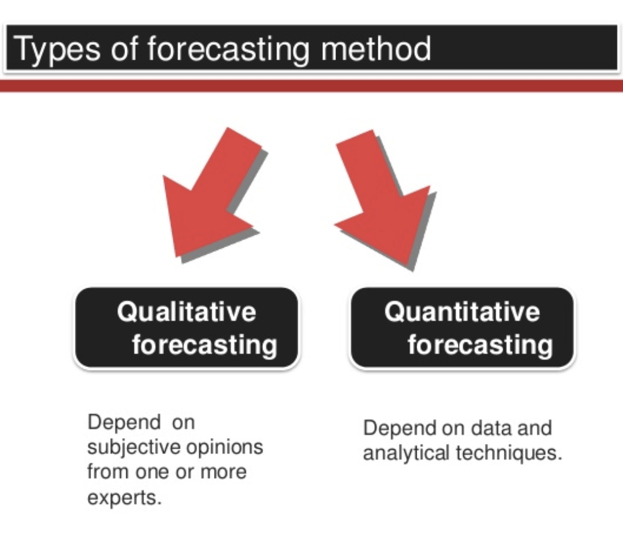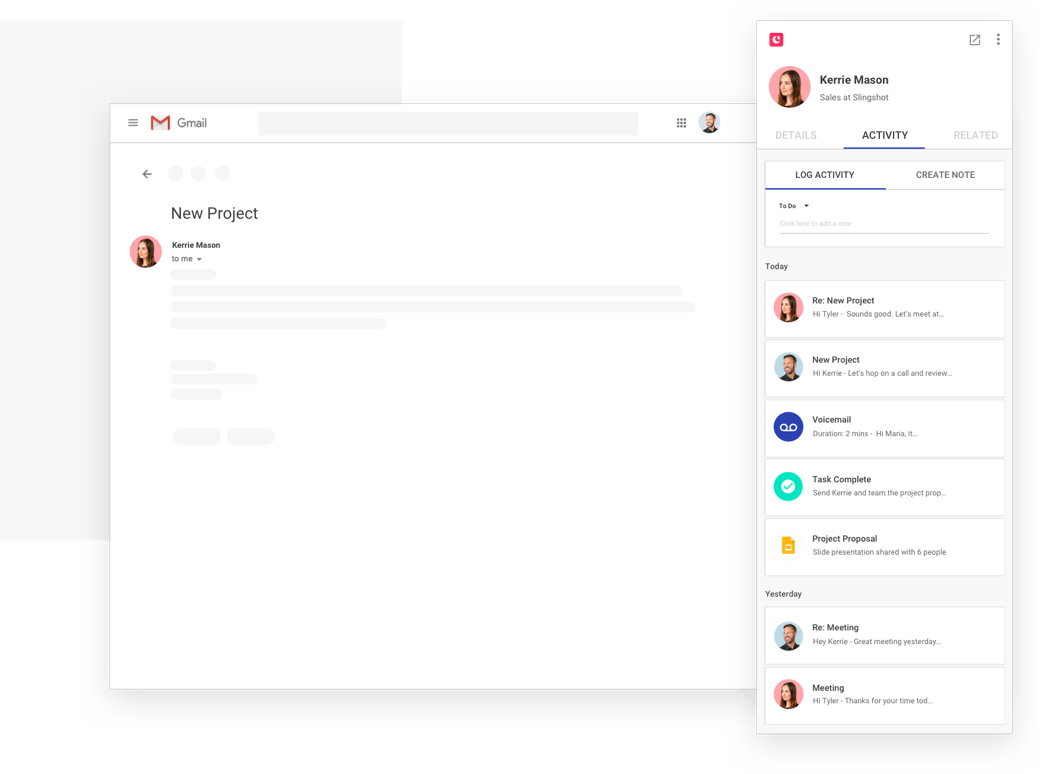Wouldn’t it be great to be able to predict the future? Your business would be guaranteed to bring in the big bucks.
While that’s not possible (yet – we’re watching you, AI), many businesses are using sales forecasting as a way to predict the ebbs and flows of their performance over time.
In turn, this is helping them to make smarter decisions that bring them closer and closer to those coveted big bucks.
But there’s a glaring problem: sales forecasting is tough. One study shows that 79 percent of sales companies miss their forecasts by 10 percent or more.
This is partly because you simply can’t predict external factors like changes in the economy, your market and niche, consumer trends, and new laws affecting all of the above.
Fortunately, there’s still hope. Your sales forecast can become pretty darn accurate when you have the right tools and approaches. That’s just what we’ll explore in this article.
We’re going to look at:
- The definition of sales forecasting
- The difference between quantitative and qualitative sales forecasting, as well as their pros and cons
- A few of the most popular sales forecasting methods
Let’s get to it.
Post Contents

Don’t wait for someone else to do it. Hire yourself and start calling the shots.
Get Started FreeWhat Is Sales Forecasting?
Sales forecasting is the act of using various techniques to help predict a business’s sales volume and revenue over a specific period of time. These time periods are most commonly by week, month, quarter, or year.
There’s no single right way to create a sales forecast, and you’ll find that certain approaches are much more effective than others. For example, a company that tracks its performance and uses analytics software will likely have more accurate sales forecasts than a company that uses educated guesses and does the math by hand.
Benefits of Sales Forecasting
A sales forecast can work wonders for your business. Here are just a few of the benefits.
Gauge demand for your products. Sales forecasting can give you a glimpse into which of your products are top-performers, which can guide decisions in marketing and advertising. If you sell physical products, this can also help you keep up-to-date inventory that minimizes the risk of stockouts.
Plan for growth. When you have a better grasp on how your business will perform, you can make more strategic moves to grow. For example, you’ll have better insights into the areas, activities, and departments that need more investment for improvement, should be cut completely, or are right on track for peak growth.
Improve the sales process. Which of your sales reps are performing the best, and which could use some more training? Are there any holes in your sales process that can be improved, like the period of time between follow-ups with leads? A strong sales forecast gives you a clearer picture on the parts of your processes and practices that are ripe for improvement.
Identify obstacles in advance. One of the biggest benefits of sales forecasting is being able to spot problems before they have a huge negative impact on your business. You might discover that your new compensation plan encouraging your sales reps to take shortcuts in the sales process, or that a competitor’s new product is stealing your sales. By identifying and predicting dips, you can take proactive action to prevent disasters.
Now that you have the lowdown on what sales forecasting is and how it can help your business, let’s go over some popular methods for how to forecast sales.
Sales Forecasting Methods: Quantitative and Qualitative
There are two categories of approaches for sales forecasting: quantitative and qualitative. Quantitative forecasting is more objective, relying heavily on cold, hard numbers like historical data and reporting.
On the other hand, qualitative forecasting is more subjective. It allows for a human touch, taking into account the intuition, opinions, and experience of business leaders and other individuals.

Pro tip: If you’re having trouble remembering the difference between the two, remember that the term quantitative comes from “quantity,” which is a numerical word that involves counting and other calculations. Qualitative comes from “quality,” referring to qualities and characteristics gleaned by individuals.
Let’s break these down.
Quantitative Methods of Sales Forecasting
Quantitative sales forecasting methods are more accurate than their qualitative counterparts. That’s because the resulting conclusions are based on data and facts rather than opinions and assumptions.
To perform quantitative sales forecasting, you’ll need access to a few things:
- Analytics data on how your company is performing. At the least, this data should include points like how many leads turn into conversions, how much time those conversions took, and details about each stage of the sales funnel.
- Industry benchmark data, like research from government agencies, academic institutions, and other reliable sources. This isn’t necessary, but can help where you lack your own data.
- A forecasting tool or program that can perform the complex calculations for you. If you don’t have access to this, you’ll at least need the ability to do some simpler calculations by hand.
Qualitative Methods of Sales Forecasting
Qualitative sales forecasting methods can involve:
- Subjective forecasting, where an expert or business leader uses their own experience, intuition, and opinions to make predictions
- Market research from surveys and questionnaires
- Focus groups, where panels of current and potential customers give their opinions about your company’s products and services
It’s common for sales leaders to make forecasts based on how their sales reps feel about current leads, prospects, and conversations. These can be fruitful, but they’re also subject to a whole lotta bias.
For example, consider a happy rep who just got off an awesome sales call versus a dejected rep who just got off a terrible call. Chances are, their mood will affect their outlook, with the happy rep giving higher sales predictions than the bummed one.
This and other examples of human bias are why we recommend avoiding scenarios where decisions are made without numerical data to back them up.
But if you lack the resources and bandwidth, qualitative forecasting is still better than nothing!
4 Things You Need for Strong Sales Forecasts
At its core, an accurate sales forecast depends on good data. This rings true regardless of the specific sales forecasting methods you plan to use.
Good data in, good data out.
Likewise: bad data in, bad data out.
Here are a few considerations for making sure your data and forecasts are in the “good” category.
1. Clearly-Defined Goals (Based on Realistic Benchmarks)
You can’t work toward a goal if you don’t have a clear understanding of what that goal is. Make a regular habit of setting personal goals for each sales rep, as well as group goals for the whole team.
These goals should always be realistic based on past performance. For example, if your team’s highest number of sales in a month is 50, it’s unwise to jump to a goal of 75. Work your way up incrementally instead.
2. A Structured Sales Process
Every rep on your team should be using the same steps and practices to nurture a prospect through the sales funnel. This creates a repeatable, reliable process, which means it’s more easy to predict in the long run.
To ensure that the sales process is consistent and structured, ensure that your whole team gets regular, comprehensive training.
Lay out the definitions of what constitutes an opportunity, when that opportunity becomes a prospect, when that prospect officially becomes a lead, and when that lead officially becomes a closed deal.
Create and update documents and databases where this information is all laid out and easily accessible. That way, it’s always available whenever someone needs it.
3. An Understanding of Your Sales Pipeline
What’s in your pipeline right now? How many opportunities, leads, and closes does each sales rep have open? How long have they been in their respective stages, and how does that compare to the company’s averages?
The better your understanding of your sales pipeline, the better your ability to predict how it will evolve over time. By drilling down individual rep performance, you’ll also be able to identify areas where extra training and support is needed.
4. Well-Documented Data
As we mentioned earlier, comprehensive and accurate data is key to good forecasts. This is where performance tracking software like a customer relationship management (CRM) platform is a huge help.
CRMs like Copper make it easy for all your reps to track even the smallest details, like how many times they’ve talked to a certain contact, what those conversations involved, and how long each of the funnel stages took. This granular data will fortify your ability to make predictions.

If you don’t have a CRM, get your reps into the habit of taking detailed notes about their day-to-day activities. Create spreadsheets and other documents for them to easily input this data while making sure everyone is writing the same information and using the same definitions.
How to Forecast Sales: 3 Popular Techniques
There are dozens of sales forecasting models that businesses use to make predictions, with various outcomes and performance areas they can aim to improve.
Depending on what you’re going for, the process can vary drastically in terms of how much and what type of data you need, as well as the complexity and capabilities of your sales forecasting tools.
We’re going to look at three sales forecasting techniques that use simple calculations, as well as more sophisticated approaches.
1. Historical Forecasting
This common sales forecasting method involves making predictions based on past data. For example, if your company earned $10,000 in sales revenue last month, you might assume that this month will be similar.
To make the prediction more complex, you might consider growth over time. Let’s say the last three months of revenue were:
- $8,000 three months ago
- $9,000 two months ago
- $10,000 last month
Since sales have been increasing by $1,000 a month, you might predict that they’ll continue on this trajectory.
You can also try this with growth percentages. Let’s say these are your past three months’ numbers:
- $8,000 three months ago
- $8,400 two months ago – 5 percent growth
- $9,072 last month – 8 percent growth
You’ve experienced 5 to 7 percent monthly growth. So a conservative estimate for next month is that you’ll earn $9,525.60 at a 5 percent growth rate. A high estimate is $9,797.76 at an 8 percent rate.
Note: To calculate percentage change, take the new dollar total and subtract the old dollar total from it. Then divide the result by the old total. To make it a percentage, multiply that number by 100.

2. Opportunity Stage Forecasting
This sales forecasting technique looks at a deal’s probability of closing based on which stage of your sales funnel it’s currently in.
By nature, deals that are farther along your funnel are typically more likely to close.
You might look at your past six months of performance data and see that 20 percent of the leads who had just had their first call with a sales rep closed, while 50 percent of the leads that finished a demo for your company’s software closed.
You can then apply these percentages as your probability that future deals will close.
To calculate these percentages, look at the total number of closed deals your company had during a specific timeframe. Then, look at your sales pipeline and tally the number of contacts in a particular stage. Take the number of closed deals and divide it by the total contacts in the stage, and multiply that number by 100 to get a percentage.

Let’s walk through an example.
Say that your team closed 50 deals last month. And these were the total number of contacts in each stage at the month’s end:
- Identified lead: 100
- Discovery call: 80
- Sales demo: 70
- Proposal sent: 60
- Negotiation: 50
- Deal closed: 30
To calculate how many identified leads closed, divide 30 by 100 (0.3), then multiply by 100 (30 percent). This means that based on last month’s numbers, there’s a 30 percent chance that each identified lead will become a closed deal.
3. Multi-Variable Forecasting
There are many factors that can impact a sales outcome, which means that the more simple calculations we discussed above have plenty of room for error.
As the name suggests, this sales forecasting technique takes several variables into consideration. This is hands-down the path to the most accurate predictions, because it involves more calculations and less assumptions.
Here are some of the factors that can be included into the same forecast calculation:
- Each sales rep’s “win rate,” or the percentage of deals they closed in a certain time period
- The predicted dollar value of the deal based on the size of the lead’s organization and the scope of their needs
- The number of days left in the measured time period
- The stage of the pipeline the lead is currently in
This is where sales forecasting software like CRM comes in handy. They’re often built with complex formulas to take several considerations and details into account, giving you a much more accurate prediction.
Making the Most of Your Sales Predictions
If you can master the art and science of sales forecasting, you’ll unlock a whole new level of possibilities for your business.
Quantitative sales forecasting methods reign supreme, because predictions based on real data are generally more accurate. But when you don’t have access to reliable data sets – or the computational power to crunch the numbers and spot trends from those data sets – you can still reap benefits from qualitative forecasting based on opinions and expertise.
Do you use any sales forecasting methods for your business? Let us know in the comments below.




